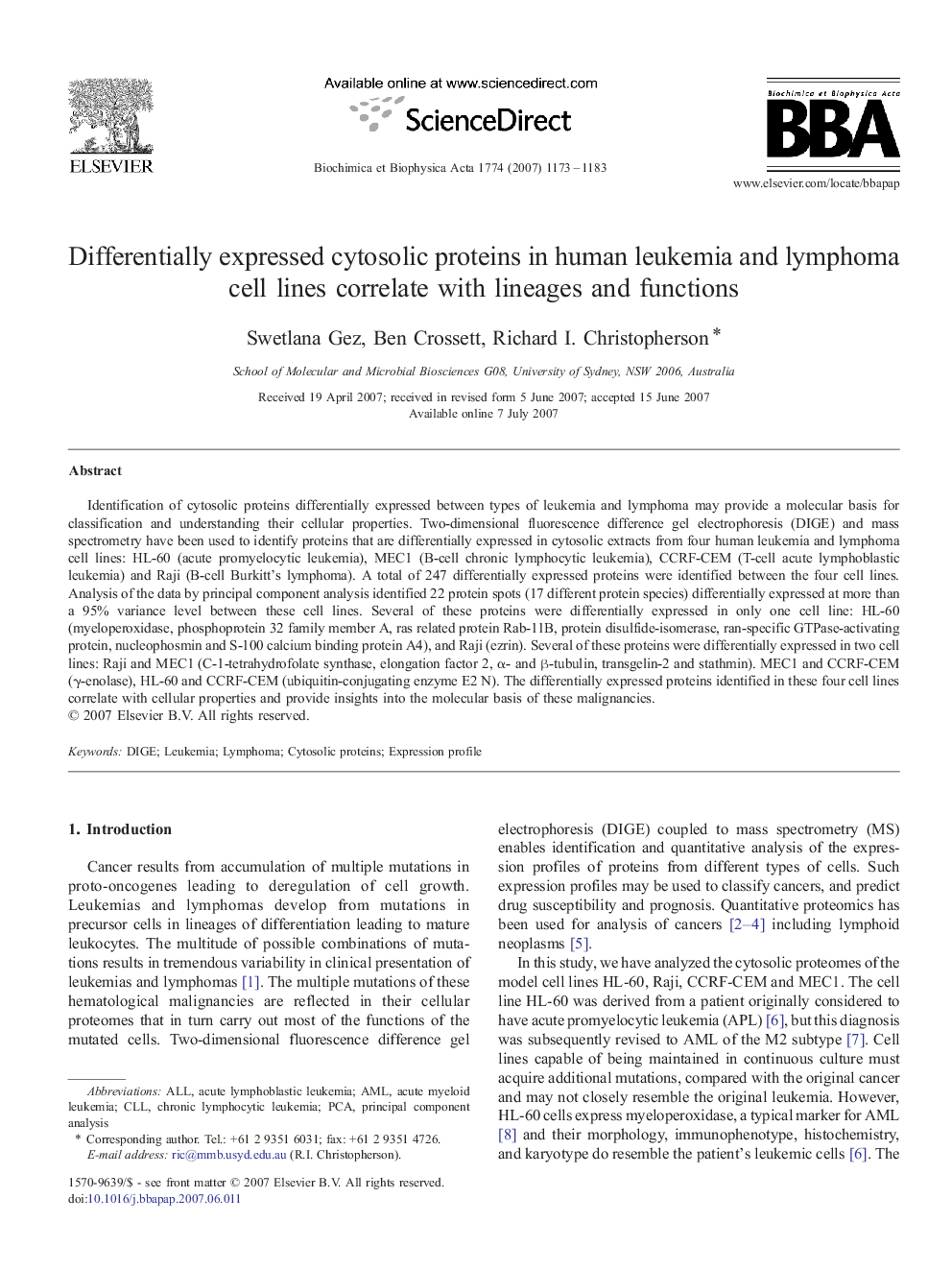| Article ID | Journal | Published Year | Pages | File Type |
|---|---|---|---|---|
| 1179144 | Biochimica et Biophysica Acta (BBA) - Proteins and Proteomics | 2007 | 11 Pages |
Identification of cytosolic proteins differentially expressed between types of leukemia and lymphoma may provide a molecular basis for classification and understanding their cellular properties. Two-dimensional fluorescence difference gel electrophoresis (DIGE) and mass spectrometry have been used to identify proteins that are differentially expressed in cytosolic extracts from four human leukemia and lymphoma cell lines: HL-60 (acute promyelocytic leukemia), MEC1 (B-cell chronic lymphocytic leukemia), CCRF-CEM (T-cell acute lymphoblastic leukemia) and Raji (B-cell Burkitt's lymphoma). A total of 247 differentially expressed proteins were identified between the four cell lines. Analysis of the data by principal component analysis identified 22 protein spots (17 different protein species) differentially expressed at more than a 95% variance level between these cell lines. Several of these proteins were differentially expressed in only one cell line: HL-60 (myeloperoxidase, phosphoprotein 32 family member A, ras related protein Rab-11B, protein disulfide-isomerase, ran-specific GTPase-activating protein, nucleophosmin and S-100 calcium binding protein A4), and Raji (ezrin). Several of these proteins were differentially expressed in two cell lines: Raji and MEC1 (C-1-tetrahydrofolate synthase, elongation factor 2, α- and β-tubulin, transgelin-2 and stathmin). MEC1 and CCRF-CEM (γ-enolase), HL-60 and CCRF-CEM (ubiquitin-conjugating enzyme E2 N). The differentially expressed proteins identified in these four cell lines correlate with cellular properties and provide insights into the molecular basis of these malignancies.
